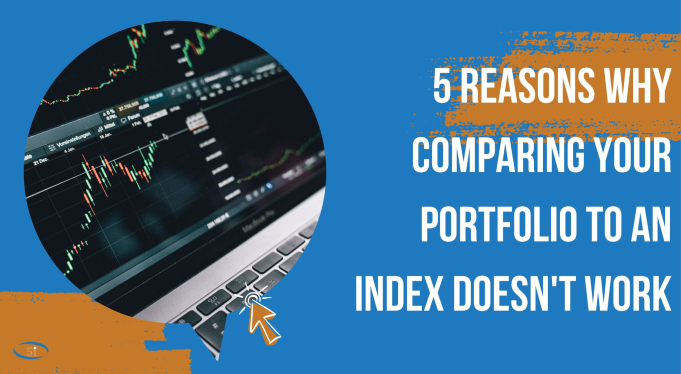Many market indexes hit new highs this week, but have you ever really thought about a stock index? What it is exactly, and why are they so important (if at all)?
A stock market index is meant to show how a market is doing on average. It typically includes the largest companies in a country, and there are 11 different sub-sectors in North America. Committees try to set up their indexes so they represent the economy/market. If a company is taken over, a new company is added. If a company’s shares become too illiquid, it is dropped from the index.
Most indexes have highly regulated criteria. For example, the S&P 500 has, amongst others, the following criteria for any company to be added: its shares must be highly liquid; at least 50 per cent of its outstanding shares must be available for public trading; it must report positive earnings in the most recent quarter; and the sum of its earnings in the previous four quarters must also be positive.
But watching an index too closely, and comparing it to your own investment portfolio, may not be right for every investor. Far too much emphasis is put on beating the index. We understand this focus if you are a professional fund manager. After all, portfolio managers need to justify their fees, and if they can’t beat the market then what are you paying for? But for individuals, let’s look at five reasons why there is far too much focus on index returns.
The Index May Not Be Right For You
If you are comparing any index to your own returns, the index composition needs to match your portfolio’s composition. Otherwise, the comparison will be largely meaningless.
For example, the S&P/TSX composite index is currently 31 per cent financials and 17.7 per cent energy. If you want more diversification and don’t think two sectors alone should account for nearly 50 per cent of the market, then the composite is not the right index to follow.
Sure, banks are an important part of the Canadian economy. But with technology at only eight per cent in Canada, and at 30 per cent for the S&P 500, it should be no surprise that the Canadian market continues to lag U.S. markets (as defined by their indexes).
An incomplete picture
Most media outlets report on how the S&P/TSX composite, S&P 500, Dow Jones or Nasdaq indexes are doing. In almost every case, however, they are reporting an incomplete picture. Most quoted indexes do not include dividends. A better index to use, especially when looking at annual returns, is a total return index.
For example, the S&P/TSX composite in 2023 rose eight per cent, but its total return index rose 11.8 per cent. It is important to include dividends when comparing investment performance because they form a very big part of a portfolio’s total return.
You can’t spend an index
At the end of the day, any investment plan must be right for you. Who cares if you beat the index if your financial goals aren’t being met? You can’t spend an index anyway.
We’ve seen many investors get in a tizzy because they are underperforming this, that or the other index. We’ve seen some investors fret because they are only up 20 per cent while the index is up 25 per cent. But it is important to compare risk profiles when looking at indexes. We would take a lower-risk 20 per cent return over a higher-risk 25 per cent return all day long.
Unlock the Power of Informed Investing with 5i Research!
DIY investing doesn't have to mean going it alone. At 5i Research, we're your trusted partner in navigating the stock market. Our platform offers comprehensive stock and market research, empowering you to make smart investment decisions.
- Investor Q&A: Have burning questions? Get answers from our team of experts and fellow investors in our dedicated Q&A section.
- Research Reports: With over 60 meticulously researched Canadian stocks, our reports offer in-depth analysis, giving you the confidence to invest wisely.
- Model Portfolios, Alerts, Forums, Portfolio Tracking, and Much More...
No taxes, commissions or slippage
Another example of why an index does not represent the real world: they do not adjust performance for taxes. An index does not pay a commission when adding/deleting portfolio securities. Even if you trade with a no-commission broker, you still experience bid/ask slippage in your portfolio, where a bid/ask spread might be 10 cents. This can add up.
So, with no taxes, commissions or slippage, is it any wonder why it is hard for individuals to match an index’s return.
Index structures often make no sense
Some indexes are price weighted; some are market-cap weighted. In a price-weighted index, the index gives greater weight to stocks with higher prices in terms of their contribution to the index value and changes in the index.
But the price of a stock also depends on how many shares are outstanding. With few shares, a company might have a very high stock price, so it gets a larger weighting in an index. But a high share price does not automatically make it a good company.
Same thing with a market-cap-weighted index. In this case, each component of the index is weighted relative to its total market capitalization. Companies with larger market capitalization exert a greater impact on the index value.
But again, a company can boost its market cap with a higher number of shares. A company constantly issuing shares will have a greater market cap, and a higher representation in a market-cap index. But this does not automatically make it a good company, and very likely makes it the complete opposite of a good company.
Take Care,







Comments
Login to post a comment.